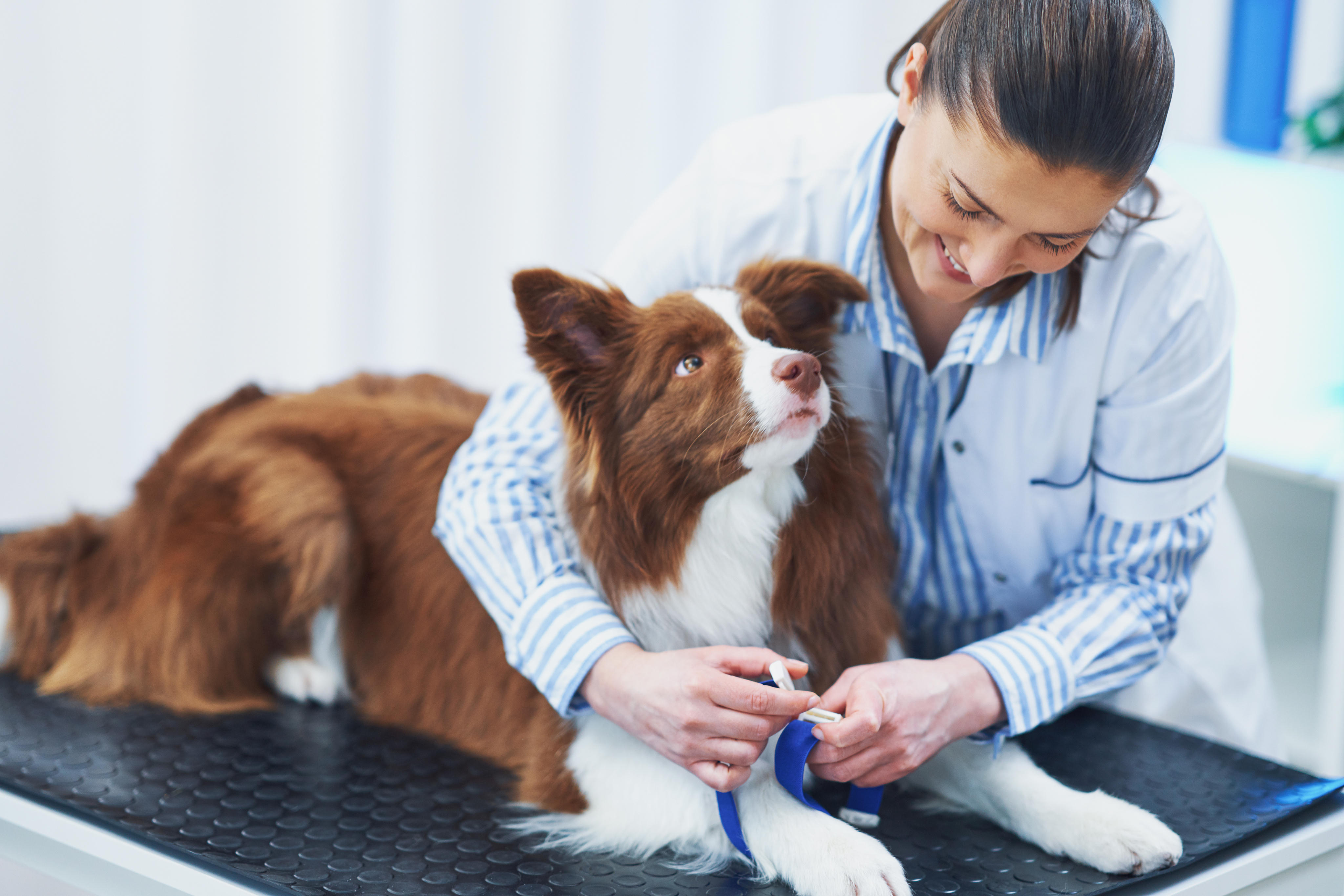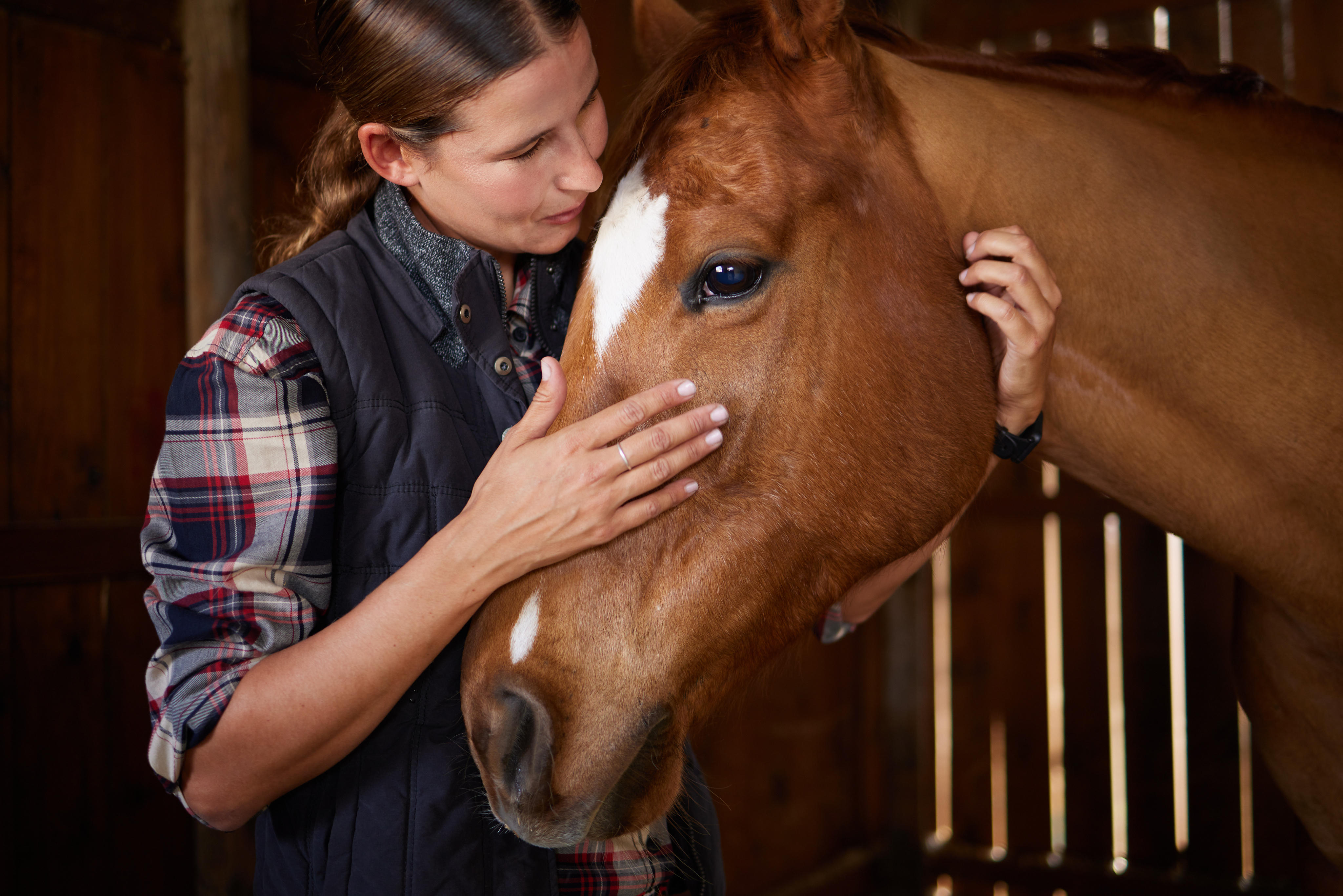Managing Hyperosmolar Syndrome
Proper Management to Avoid Complications
Diabetic hyperosmolar (nonketotic) syndrome (DHNS) is a complication of diabetes mellitus that is not commonly observed in the dog. However, hyperosmolar syndrome is a potentially serious development in diabetic ketoacidosis (DKA) and can have profound effects on the central nervous system function.
Diagnosis
Physical examination often reveals profound dehydration, and the dog is typically lethargic, extremely depressed, or actually comatose. There is a direct relationship between the severity of the hyperosmolality and the severity of these signs.
Affected dogs also exhibit the classic signs of diabetes mellitus (polydipsia, polyuria, polyphagia, and weight loss). They progressively get weaker, experience anorexia, become lethargic, and drink less fluids.
Management Guidelines
Goals of management include the correction of fluid deficits and electrolyte balance associated with severe dehydration, the reduction of blood glucose via insulin therapy, correction of the hyperosmolar state and management of concurrent diseases.
Hyperosmolality usually resolves with intravenous isotonic fluid and insulin therapy, although correction of the hyperosmolar state must be done slowly to minimize the shift of water from the extracellular to the intracellular compartment. Fluid therapy is critical to manage DHNS, especially in the first 4 to 6 hours of management.The normal range of serum osmolality in a dog is typically 280 to 300 mOsm/kg.
The goal is to reduce blood glucose at the rate of 50 mg/dL/hr. When the blood glucose approaches 250 mg/dL, the IV fluid selection should be changed to 5% dextrose solution. Insulin therapy should be delayed (typically 4 to 6 hours) until the fluid therapy has improved the condition of the dog, and corrected the dehydration, improved the urine production, hyperglycemia, hyperosmolality and electrolytes. The need for insulin management is not as critical with hyperosmolar nonketotic syndrome as with ketoacidosis.
Evaluation of Management
When evaluating the fluid therapy, it is important to consider several areas including urine monitoring, blood pressure, blood glucose, serum electrolytes, BUN, and urine glucose.
Help Your Practice Manage Diabetes Mellitus
View and download resources and tools that will assist your hospital, inform your team, and help with clients.
Read More About Canine Diagnosis & Management
Diagnosis & Management
Differentiating Factors
Managing Hyperosmolar Syndrome
Clinical Signs
Managing Uncomplicated Diabetes
Related Diseases
Managing Diabetes Complicated by Ketoacidosis
Important Safety Information
Vetsulin® should not be used in dogs known to have a systemic allergy to pork or pork products. Vetsulin is contraindicated during periods of hypoglycemia. Keep out of reach of children. As with all insulin products, careful patient monitoring for hypoglycemia and hyperglycemia is essential to attain and maintain adequate glycemic control and prevent associated complications. Overdosage can result in profound hypoglycemia and death. The safety and effectiveness of Vetsulin in puppies, breeding, pregnant, and lactating dogs has not been evaluated. See package insert for full information regarding contraindications, warnings, and precautions.
References
- Martin GJ, Rand JS. Pharmacology of a 40 IU/ml porcine lente insulin preparation in diabetic cats: findings during the first week and after 5 or 9 weeks of therapy. J Feline Med Surg. 2001;3(1):23–30.
- Vetsulin® (porcine insulin zinc suspension) [Freedom of Information Summary]. Millsboro, DE: Intervet Inc.; 2008.
- Data on file, Merck Animal Health.
- Graham PA, Nash AS, McKellar QA. Pharmacokinetics of porcine insulin zinc suspension in diabetic dogs. J Small Anim Pract. 1997;38(10):434–438.
- Martin GJ, Rand JS. Pharmacokinetic and Pharmacodynamic Study of Caninsulin in Cats with Diabetes Mellitus. 2000: Internal Study Report.
- Feldman EC, Nelson RW. Canine and Feline Endocrinology and Reproduction. 3rd ed. St. Louis, MO: Saunders; 2004:539–579.
- Tennant B, ed. BSAVA Small Animal Formulary. 4th ed. Gloucestershire, UK: British Small Animal Veterinary Association; 2002.
- Feldman EC, Nelson RW. Canine and Feline Endocrinology and Reproduction. 3rd ed. St. Louis, MO: Saunders; 2004:486–538.
- Reusch C. Feline diabetes mellitus. In: Ettinger SJ, Feldman EC, eds. Textbook of Veterinary Internal Medicine. 7th ed. St. Louis, MO: Saunders; 2010:1796–1816.
- Nelson RW. Canine diabetes mellitus. In: Ettinger SJ, Feldman EC, eds. Textbook of Veterinary Internal Medicine. 7th ed. St. Louis, MO: Saunders; 2010:1782–1796.
- Burgaud S, Riant S, Piau N. Comparative laboratory evaluation of dose delivery using a veterinary insulin pen. In: Proceedings of the WSAVA/FECAVA/BSAVA congress; 12–15 April 2012; Birmingham, UK. Abstract 121.
- Burgaud S, Guillot R, Harnois-Milon G. Clinical evaluation of a veterinary insulin pen in diabetic dogs. In: Proceedings of the WSAVA/ FECAVA/BSAVA congress; 12–15 April 2012; Birmingham, UK. Abstract 122.
- Burgaud S, Guillot R, Harnois-Milon G. Clinical evaluation of a veterinary insulin pen in diabetic cats. In: Proceedings of the WSAVA/FECAVA/BSAVA congress; 12–15 April 2012; Birmingham, UK. Abstract 45.
- Davison LJ, Walding B, Herrtage ME, Catchpole B. Anti-insulin antibodies in diabetic dogs before and after treatment with different insulin preparations. J Vet Intern Med. 2008;22:1317-1325.
- Banfield State of Pet Health 2016 Report. p 12-13.




 Go To United States
Go To United States Algeria
Algeria Argentina
Argentina Australia
Australia Austria
Austria Bahrain
Bahrain Belgium (Dutch)
Belgium (Dutch) Brazil
Brazil Canada (English)
Canada (English) Chile
Chile Colombia
Colombia Croatia
Croatia Czech Republic
Czech Republic Denmark
Denmark Ecuador
Ecuador Egypt
Egypt Finland
Finland France
France Germany
Germany Greece
Greece Hungary
Hungary India
India Indonesia
Indonesia Iraq
Iraq Ireland
Ireland Israel
Israel Italy
Italy Japan
Japan Jordan
Jordan Kuwait
Kuwait Lebanon
Lebanon Malaysia
Malaysia Mexico
Mexico Morocco
Morocco Netherlands
Netherlands New Zealand
New Zealand Norway
Norway Oman
Oman Panama
Panama Peru
Peru Philippines
Philippines Poland
Poland Portugal
Portugal Qatar
Qatar Romania
Romania Russian Federation
Russian Federation Saudi Arabia
Saudi Arabia South Africa
South Africa South Korea
South Korea Spain
Spain Sweden
Sweden Switzerland (French)
Switzerland (French) Taiwan
Taiwan Thailand
Thailand Tunisia
Tunisia Turkey
Turkey Ukraine
Ukraine United Arab Emirates
United Arab Emirates United Kingdom
United Kingdom Uruguay
Uruguay Yemen
Yemen Global
Global